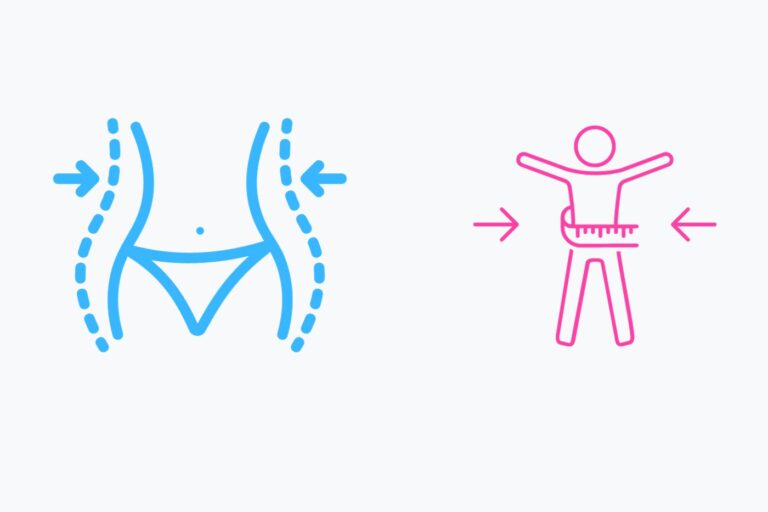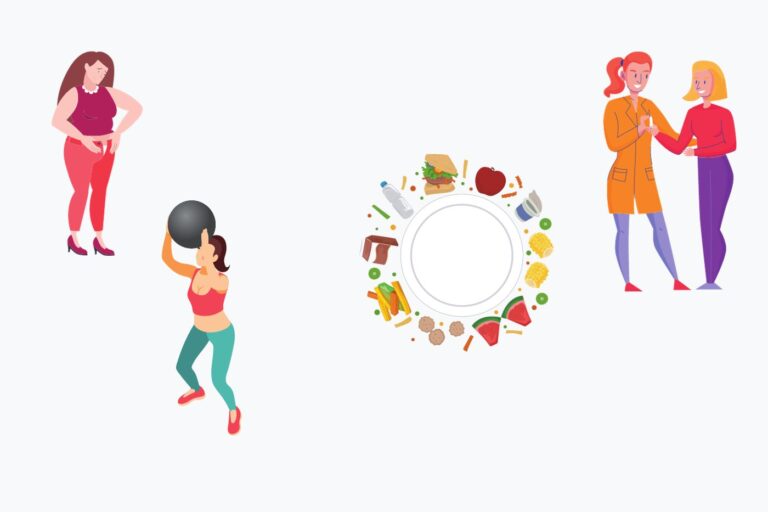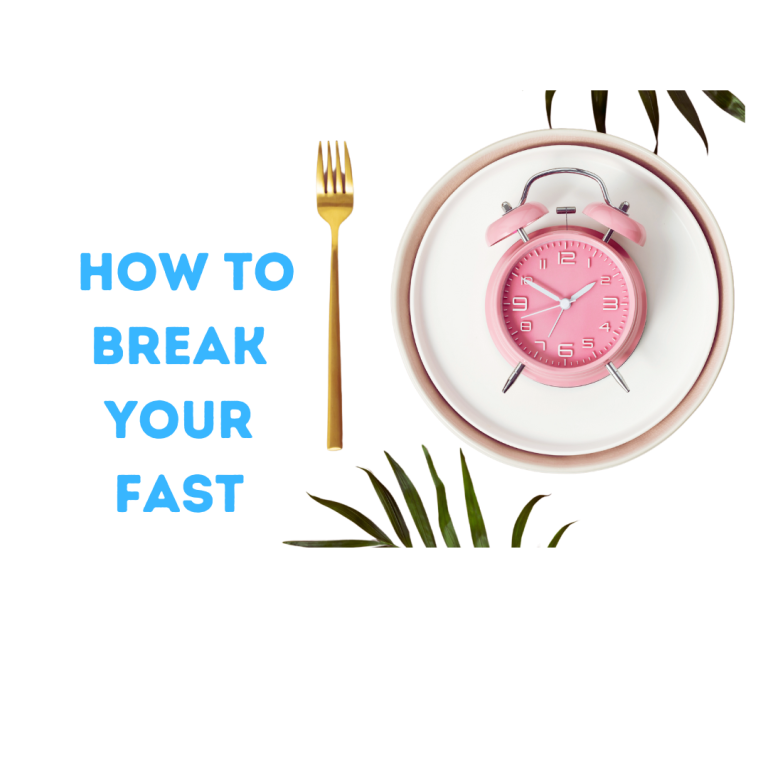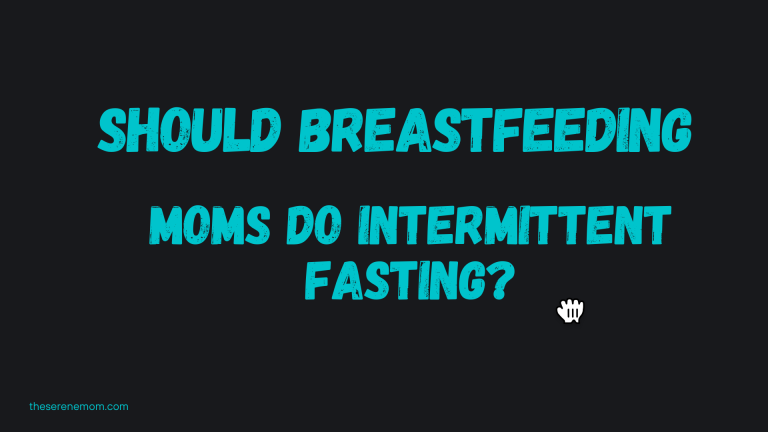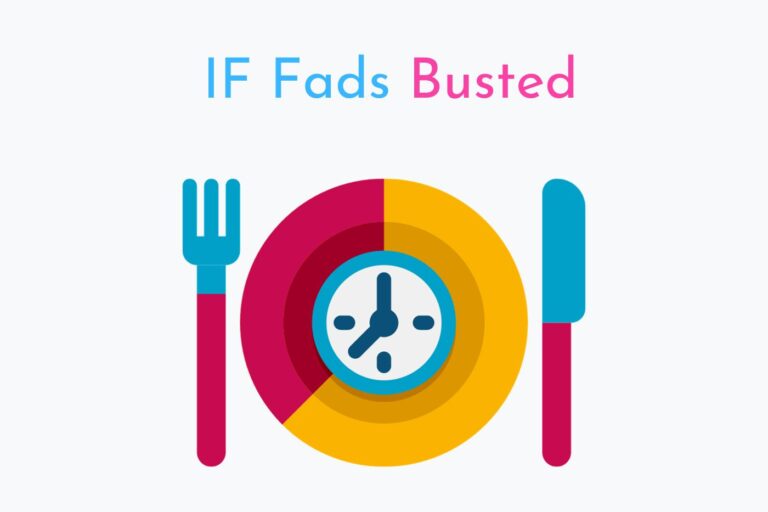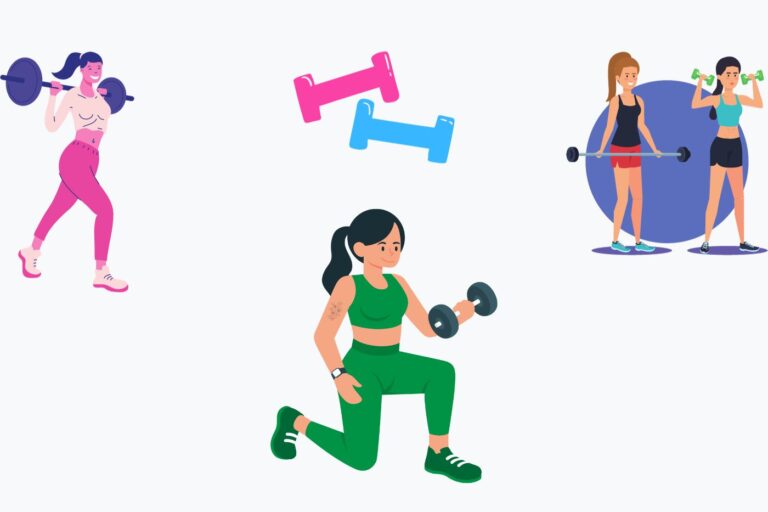Intermittent Fasting for Weight Loss: A Beginner’s Guide
You’ve probably come across intermittent fasting for weight loss and even attempted it but got stuck along the way.
You may have many questions about the best diet, what to drink, or even how to set yourself up for success.
In this detailed post, we’ll explore the best approaches to IF, how to choose the program that works for you, and how to set realistic goals.
Understanding How Intermittent Fasting Helps in Weight Loss
Before we explore how to do IF, let’s first understand what happens to the food we eat
The Role of Insulin
When we eat, our body releases a hormone called insulin to help our cells absorb and use the sugar (glucose) from the food we’ve eaten. Insulin acts like a key, unlocking the cells to let glucose in.
But when we eat lots of sugary or starchy foods, our body releases more insulin to deal with all that sugar. It stores the excess glucose as fat and this is what makes you add weight.
Fasting, Insulin Sensitivity, and Weightloss
When we fast our body’s insulin levels drop as there’s no new glucose coming in. This is good for weight loss as it allows our body to become more insulin sensitive.
Our body starts tapping into stored fat for energy and this is where weight loss happens. Instead of using glucose from your last meal, your body turns to its fat stores for fuel. As a result, you start burning fat, which leads to weight loss.
Intermittent Fasting and Reduced calorie intake
Intermittent fasting helps with weight loss by naturally reducing your daily calorie intake. When you have a shorter eating window, you have less time to eat, which means you consume fewer calories.
If you eat whole foods such as complex carbohydrates your calories per serving will be fewer and this means your body will burn more stored fats for energy.
Intermittent fasting and Metabolic Health
When you go for prolonged periods without food, you reset your metabolism. With a more efficient metabolism, you’ll burn more fats even at resting and your body is able to use up most of the food you eat for energy.
Getting Started with Intermittent Fasting for Weight Loss
There are different intermittent fasting methods such as ADF (alternate day fasting), 5:2 (Eating about 500 calories for 5 days and feasting for two days), and daily fasting with a specific eating window such as 16:8.
I have found daily fasting the most sustainable as you keep reducing the eating window. This is how to get started:
1. Set Realistic Weight loss Goals
I know you’d love to lose that weight in the shortest time possible. However, that’s unhealthy and unrealistic.
Losing weight too fast is unnatural and that’s why you’ll see people with sagging skin after weight loss. That’s not what you want.
According to Cleveland Clinic, the recommended weight loss per week is 0.5 to 1kg which translates to a maximum of 4kgs per month.
Because of unforeseen circumstances, you can set to lose 3kgs per month. This prevents the frustration that comes with unachieved goals, which could result in giving up and going back for unhealthy eating.
Set other ways of tracking your progress such as before and after photos and waist circumference changes.
Remember, your goal is to lose fats which are less dense than the muscles. With weight loss, you may notice changes in your face, waist, and clothes fitting better without much change in the scale. This is okay.
2. Clean out Your Kitchen

You’re pushing your body to do something it would rather not and as such it will resist. You’re likely to have cravings, fatigue and stress the first few days of your IF journey.
If you’ve unhealthy and sweet snacks in your home, you will indulge. So, the best thing is to get rid of all those chocolates, crisps, crackers, and soft drinks.
Replace them with healthy options such as
- Fruits – avocados are excellent
- Nuts such as cashew nuts, groundnuts, and walnuts
- Different types of vegetables – cruciferous, leafy green veggies, cucumber, carrots etc
- Proteins such as beef, chicken eggs, lentils, peas
- Complex carbohydrates such as green bananas, sweet potatoes, and arrowroots
- Bone to make bone broth.
3. Have a Plan and Start Slow
One thing you want to consider is sustainability. Starting something is easy but maintaining it for the long term requires proper planning.
Take into consideration your routines and what would work for you. For example, if you usually have family time daily at 7 p.m., you could plan to start your fasting after dinner and miss breakfast.
Also, if you eat 3 meals a day with snacks in between meals, you could start by eliminating snacks, when you master that, you can squeeze your 3 meals within a shorter eating window.
For example, in week 1 – having dinner at 7 pm, and breakfast at 9 am. Week 2 dinner at 5 p.m. and breakfast at 9 a.m.
You could increase your intensity by reducing the eating window progressively, reducing the amount of carbohydrates, and eventually the number of meals.
4. Pre-plan your Meals and Hydration
Sometimes during my fasting, I get ravenously hungry and if I have nothing ready when I break my fast, I will end up overeating(lol) or eating the wrong type of food.
I have found, knowing what I will eat keeps me on track. Usually, I have mixed vegetables, an avocado, eggs/beef, and sweet potatoes ready.
I also boil my soup often and ensure it’s ready when I’m breaking my fast.
On those days I’m too busy and don’t have ready meals (quite rare) I eat raw carrots and tomatoes as I prepare my meals.
I also plan my exercises, meals, and hydration the day before. For example,
- Drink water with green tea when I wake up
- Hit the gym at 8 am
- Drink water with pink salt after my workout
- Eat my first meal at 11 a.m (mixed vegetables, 2 boiled eggs, and avocado slices)
- Drink a mug of water at 1 pm
- Eat my last meal at 3 pm (sweet potatoes, mixed vegetables, Avocado and beef)
Understanding the best meals for intermittent fasting and planning in advance is the best way to remain committed to your weight loss goals.
5. Educate Yourself
Arm yourself with helpful resources that discuss intermittent fasting. For me, I find YouTube videos that discuss intermittent fasting tips helpful. I have two recommendations
- Dr Sten Ekberg
- Dr Mandy
Get great eBooks, blogs, and podcasts that explain intermittent fasting benefits, what’s happening in your body, and tactics to keep you going.
I have realized the more I learn about intermittent fasting, the more I want to push through even when it’s hard and tough. The comments section of YouTube channels is filled with testimonies of people who have enjoyed great benefits.
With learning you’ll understand why you cannot eat anything during your eating window and you’ll embrace a holistic view of weight loss.
6. Incorporate Exercises
While fixing your diet and fasting will sure lead to weight loss, there are other things you can do to increase the benefits. And one of them is exercising and these are the benefits:
- Enhanced Fat Burning
Exercise, especially cardio and strength training, helps boost your metabolism and increase the rate at which your body burns fat for energy.
- Weight Loss Acceleration
When combined with IF, exercise accelerates weight loss results. It creates a calorie deficit, burning more calories than you consume, which is essential for shedding pounds.
- Blood Sugar Control
Regular physical activity can help stabilize blood sugar levels, making it easier to manage hunger and cravings during fasting periods. This can lead to more effective and comfortable intermittent fasting.
- Muscle Preservation
While losing weight, it’s essential to preserve lean muscle mass. Exercise, particularly strength training, helps maintain muscle while promoting fat loss. This results in a more toned and healthy physique.
- Enhanced Insulin Sensitivity
Working out improves insulin sensitivity, making your body more efficient at using glucose. This complements the effects of intermittent fasting, which also helps regulate insulin levels.
- Appetite Regulation
Exercise can help control your appetite by reducing hunger hormones and increasing feelings of fullness. This can make it easier to adhere to your fasting schedule and make healthier food choices.
- Overall Health Benefits
Beyond weight loss, exercise contributes to better overall health, including improved cardiovascular health, increased energy levels, better mood, and reduced stress, all of which can enhance your intermittent fasting experience.
- Consistency and Habit Formation
Incorporating exercise into your daily routine can help establish healthy habits that align with intermittent fasting. Consistency is key to long-term success.
That said, the simplest and sometimes overlooked exercise is walking. Start with just 30 minutes of walking 5 days a week, preferably after a meal as this reduces the insulin spike and promotes fat burning.
7. Support and Community
The wellness journey can get lonely and sometimes doing it all alone can be discouraging.
That’s why it’s important to join a community of other people doing intermittent fasting for weight loss. Such groups provide:
- Insights and answers to common questions and challenges
- Motivation, when you see others, achieve their goals
There are Facebook groups and Reddit groups focusing solely on intermittent fasting.
8. Journal and Track Progress
Intermittent Fasting for weight loss is a long journey and tracking progress is important to knowing what’s working and what’s not.
You can download an intermittent fasting app to help you track your fasting hours, know when fat-burning and autophagy start.
You can also check your weight (I don’t recommend it because most of the time it’s discouraging). It’s inconceivable how, after a whole month of intermittent fasting you’ve lost just 2kgs. Instead, focus on other non-scale benefits such as
- Improved clarity and focus
- Higher energy levels
- Quality sleep
- Reduced cravings
- Clothes fitting better
- Reduced irritability and mood swings
- Better gut health e.g. no heartburn, or indigestion
- Well-toned physique
- More radiant and youthful skin
When you journal such things, you’re encouraged to give your best. It’s a matter of time and the weight will go.
Setting Yourself Up for Success
Now that you know how to get started, here are a few tips that will ensure you remain true to your commitment
1. Get a Quality Night Sleep
Inadequate sleep increases appetite which means you’ll consume more calories, making it hard to lose weight. Our appetite is controlled by two neurotransmitters ghrelin and leptin.
Ghrelin signals the brain that we are hungry while leptin signals fullness. During the day, the body naturally increases and decreases them so that we consume more calories.
If we sleep less, let’s 4 hours, the body increases the ghlerin and reduces leptin, such that we eat more.
Additionally, inadequate sleep increases stress levels and that’s why you’re more likely to look for sweet comfort food after a disrupted night.
I know this may be hard for moms with infants but try sleep training your babies as early as 8 weeks so that they start sleeping throughout the night.
2. Hormonal Contraceptives
Weight loss is primarily about hormones. Having hormonal contraceptives can interfere with your weight loss goals.
There are women who eat whole meals, exercise, and do intermittent fasting but fail to shed the extra pounds because of hormonal contraception.
For your success, you should consider getting non-hormonal birth control methods such as IUD.
3. Manage Stress Levels
During intermittent fasting for weight loss, stress is one of the hindrances that most people don’t know.
When you’re stressed, cortisol (stress hormone) levels go up. This signals the body to replenish the fat stores, especially in the midsection area. Even if you fast consistently and fail to manage your stress levels, weight loss may remain an illusion.
Stress also makes you eat more (most people but there are exceptions) and this contributes to weight gain.
Going back to pre-planning our meals. If things are thick and you can’t continue fasting, it’s better to break it with healthy meals instead of indulging. So keep ready healthy foods ready.
4. Eat for Nourishment and Pleasure
Who said intermittent fasting is a prison where you eat only boring foods?
When not fasting, ensure you eat healthy and delicious meals. Also, ensure you break your fast correctly to avoid discomfort.
When you eat, go for nutrient-dense foods, so that even if you eat two meals a day or even one, you have all the nutrients you need.
Additionally stock healthy ingredients to make your food tasty. This way, you’ll enjoy your food and not feel you’re missing out so much.
For me, I ensure I cook my broccoli and cauliflower with green pepper, red pepper, yellow pepper, carrots, and coriander. I use butter to saute the onions, then add ginger and garlic. It’s such a delicacy.
I boil bones with rosemary and blend the soup thoroughly. This makes it tasty and enjoyable.
So, play around with your healthy ingredients and make a delicious meal. This goes a long way in keeping you on the rails.
Frequently Asked Questions
What should you drink during intermittent fasting for weight loss?
The best drinks during intermittent fasting for weight loss include bone broth, water with pink salt, green tea, and unsweetened coffee or tea.
What is the best intermittent fasting for weight loss program?
The best intermittent fasting program for weight loss is 2MAD (two meals a day). This is because it’s sustainable and allows the body enough to burn stored fats for energy.
How much weight can you lose in a week with intermittent fasting?
The amount of weight you can lose in a week doing intermittent fasting is about 1 kg. When you start fasting, this will happen faster but may slow down as your body gets used to that routine. It’s best to spice things up and once in a while go for longer fasts, for sustained weight loss.


